What a Housekeeper Knows About Cleaning That You Don't
These Old-World tips, from the book Mind Your Manors, will solve your 21st-century housecleaning problems.
By Lucy Lethbridge
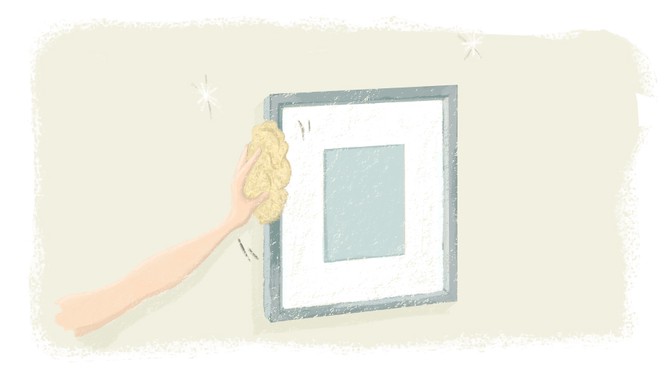
Illustration: Florie Duhau
Bread
This unlikely cleaning method went with the usual old-fashioned thrifty idea of not throwing anything away until its last morsel had been exploited. Bread was used extensively in cleaning – and processed white bread, the kind that had -become the cheap but un-nutritious staple of the diet of the poor – worked best of all. Pressing pieces of sliced white bread, screwed into pudgy balls, into the crevices of picture frames or dusty skirting boards picks up deposits of dust that can’t be got at with dusters, fingers or feathers. Bread was also used for cleaning books: pressing a wodge of bread into the spine and cover of a book then wiping over with a very slightly damp cloth was recommended.
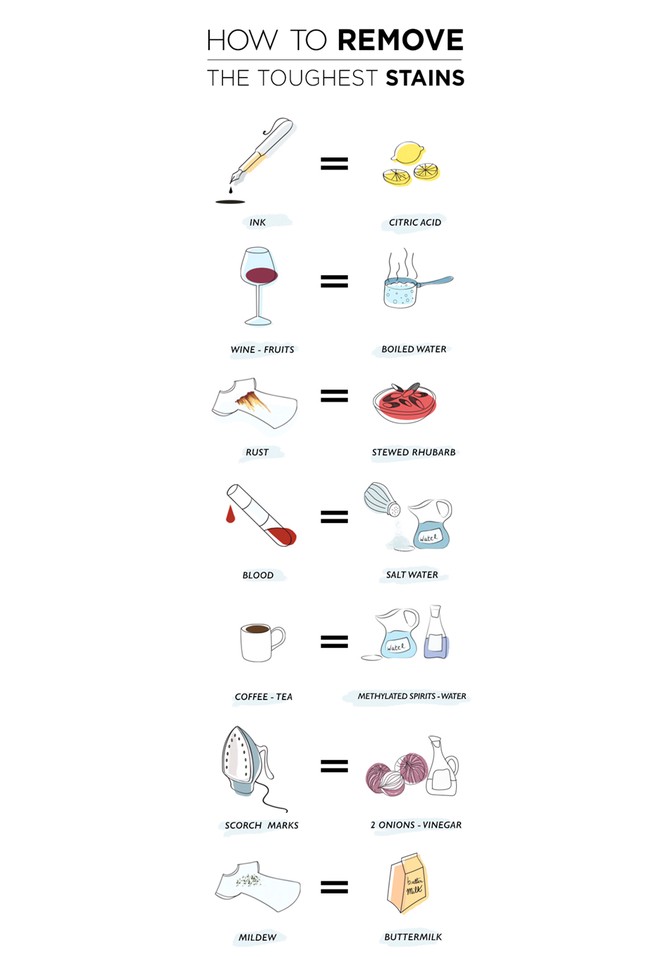
Illustration: Florie Duhau
Stains
Ink: Press a teaspoon of citric acid onto the spots (using a bone spoon) and moisten with water. Then pour boiling water over the stains until they disappear.
Wine or fruit: Stretch the fabric over a bowl and pour boiling water through it until the stain disappears.
Rust: Stewed rhubarb, spread over the stain, left for a few hours and washed off, is pretty -effective. (Boiled fig leaves work just as well.)
Blood: Soak thoroughly in cold, salty water for an hour or so before washing.
Old coffee or tea stains: Can be soaked in a diluted solution of methylated spirits, half a cup to two cups of water. Leave garments to soak for an hour, then wash as normal.
Scorch marks: Bruise 2 onions then boil in half a pint of vinegar with some grated soap and two ounces of Fuller’s Earth. When cooled, apply mixture to scorch mark and rinse off when dry.
Mildew: Soak for a few hours in buttermilk before washing.
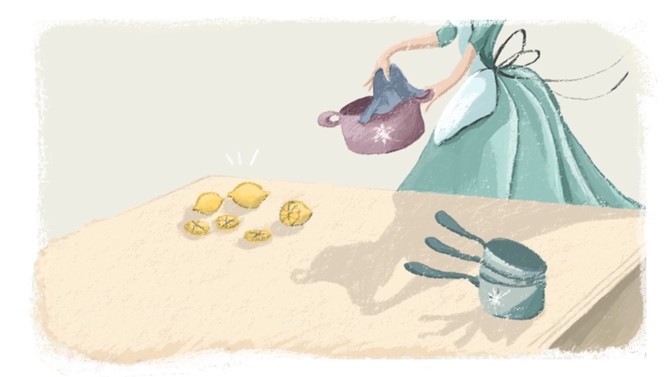
Illustration: Florie Duhau
Copper Pans
Before the Second World War, the most visible indication of the batterie de cuisine of a large kitchen was a gleaming array of copper pans. Copper is ideal for cooking because of its high conductivity of heat – but it is a chore to clean. It will scratch and tarnish if scoured too roughly in too much sloshing water. For kitchen-maids, silvers and (a very fine silica sand now chiefly used as topsoil in gardening) was a common ingredient for cleaning copper, mixed with malt vinegar or lemon and then rubbed into the pan. Edna Wheway cleaned -fifty copper pans a week with green carbolic soap. She followed this with a paste of whitening powder (a fine chalk powder) mixed with vegetable oil and then rubbed in with a cloth, rinsed off and dried thoroughly. Lemons make an easy and effective copper cleaner: just take the shells of squeezed lemons and dip them in cooking salt. Then gently scrub the copper saucepan with them, rinse and dry well, and polish to a shine.
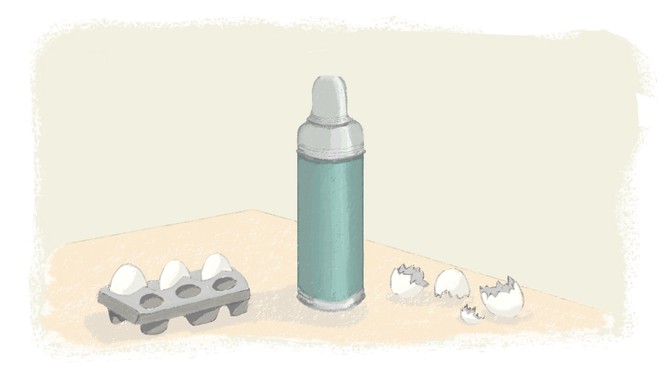
Illustration: Florie Duhau
Thermos
To freshen a thermos put crushed eggshells in it and fill with vinegar. Leave it to stand for a few hours then empty, rinse and dry thoroughly.
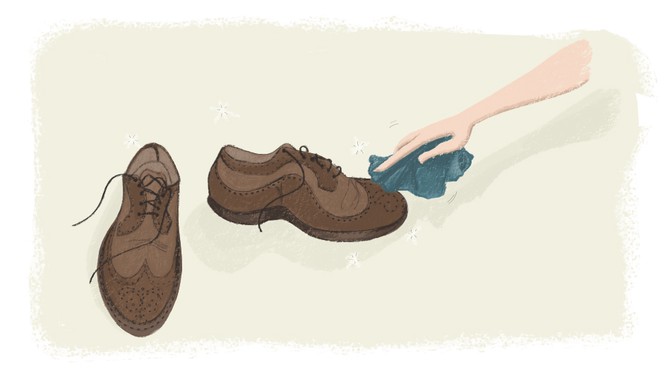
Illustration: Florie Duhau
Leather Stains
When removing sea-water stains from leather shoes: Dissolve a teaspoon of washing soda in two tablespoonfuls of hot milk. Apply to the stain on a cloth and wait for it to dry. Repeat, then -polish with a wax shoe polish.
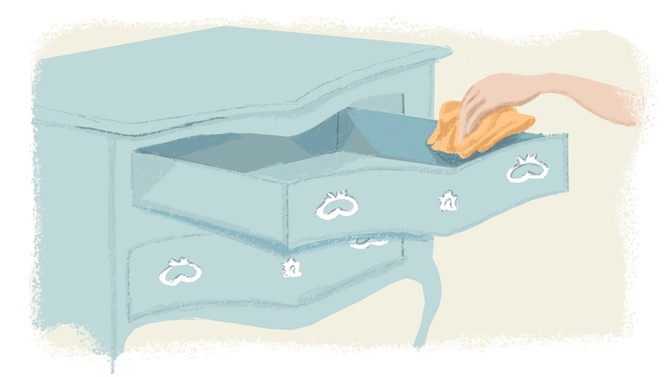
Illustration: Florie Duhau
Clothes Moths
Once or twice a year, wipe the insides of drawers and wardrobes with ammonia to deter moths and prevent them from both laying eggs and fertilizing eggs already laid on clothing.
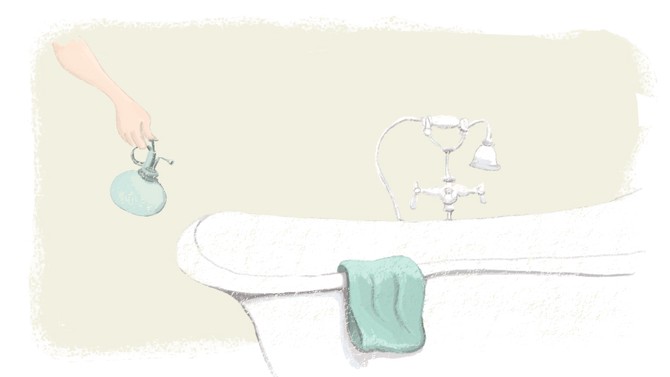
Illustration: Florie Duhau
Mold and Mildew
Rub vinegar around the seal of your washing machine door every week to soak up the black slime deposited by liquid detergents. Dilute one cup vinegar with three cups of water and use for removing mildew from grouting in bathrooms. A spray of it now and then will stop mildew forming.

Reprinted from Mind Your Manors: Tried-and-True British Household Cleaning Tips. Copyright © 2016 by Lucy Lethbridge. Published by W.W. Norton & Company.
Published 08/16/2016

